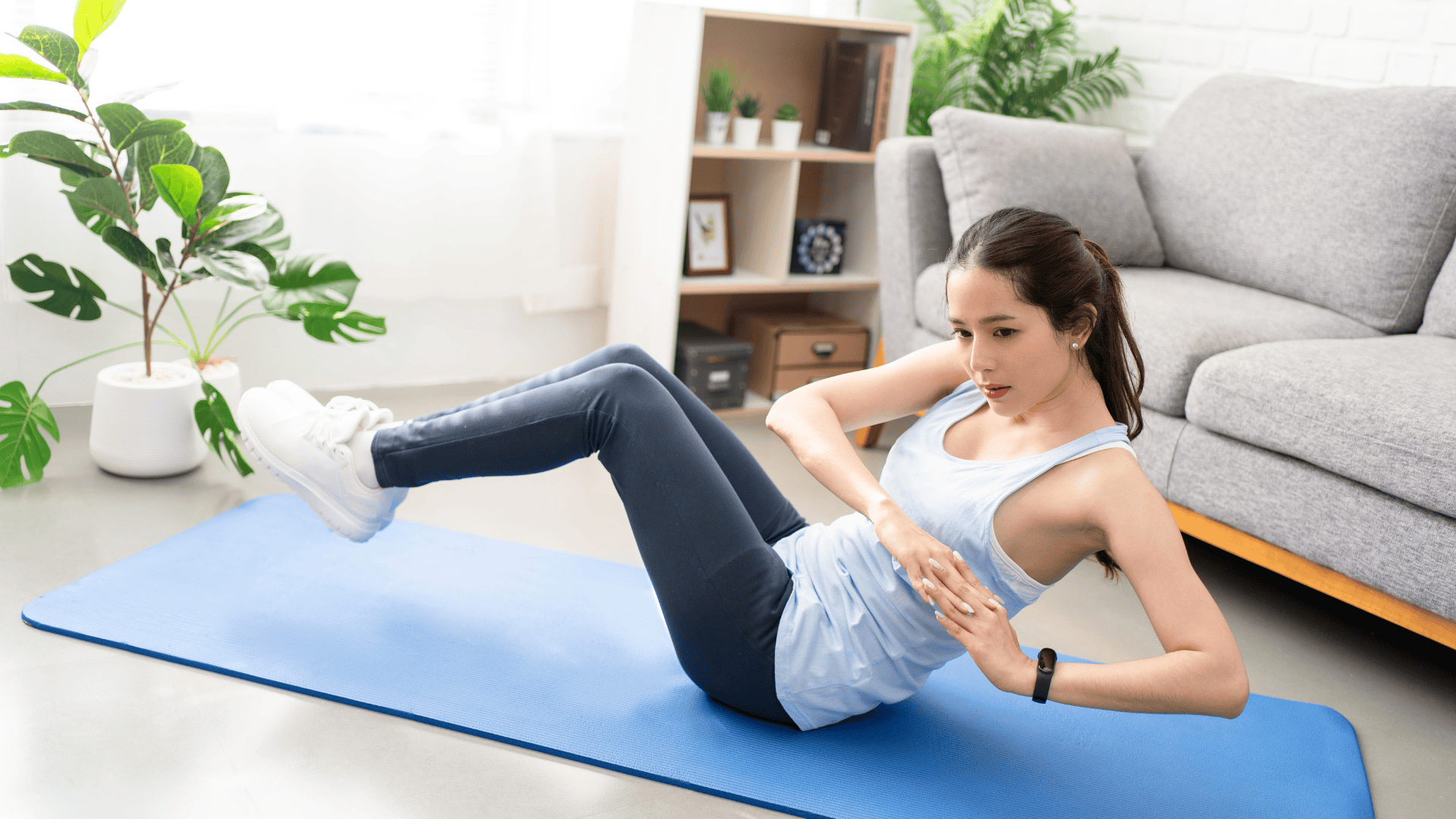Too busy to work out, but still want to do something for yourself?
That thought comes up a lot, especially when you have work, errands, kids, and everything else. And by the time you finally have a break, the day’s already over.
Going to the gym doesn’t always happen. And figuring out what to do at home? That can feel like even MORE work.
But don’t worry!
Because in this blog post, you’ll get a full 7-day workout schedule for woman at home that’s easy to follow and easy to stick with. And what’s even better is, you won’t need any fancy equipment to follow this.
Just a set of dumbbells, a mini band, and a little space to move.
Each workout takes 15 to 35 minutes. You’ll cover strength, cardio, Pilates, and recovery across the week. It’s designed to help you build consistency even on your busiest days.
Why a Workout Schedule for Women at Home Works
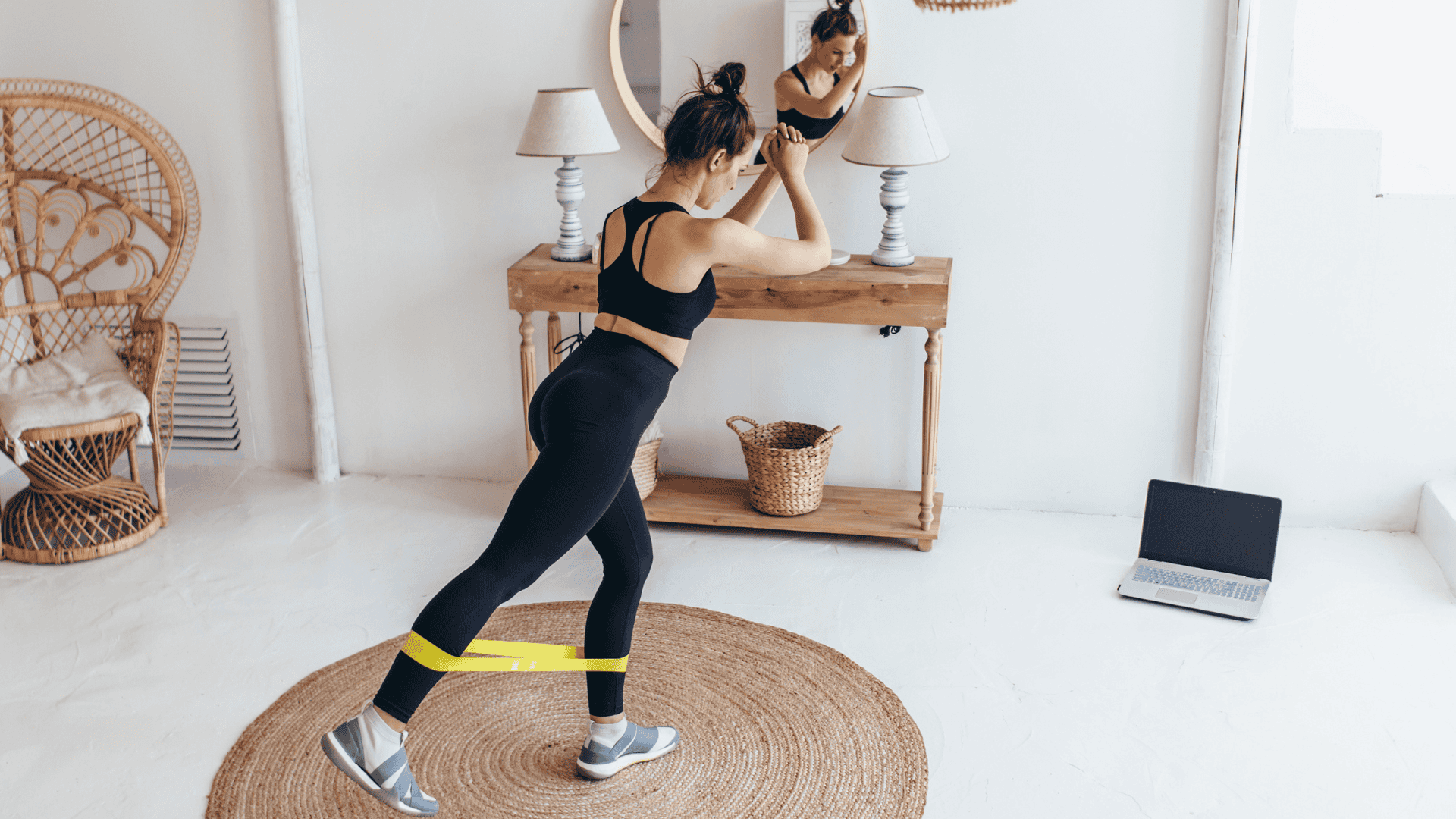
It’s easy to skip a workout when the plan feels too BIG.
Driving to the gym, waiting on equipment, blocking out an hour you don’t have—it adds up fast.
And when your life is already too busy, it’s one of the first things that usually go.
That’s why home workouts work so well. You don’t have to overthink them. You just show up, press start (if you have equipment at home, but if you don’t have that’s still fine), and move.
They’re faster, easier to fit into your day, and there’s no pressure to keep up with anyone else.
You go at your pace, in your OWN space.
Also, when your workouts are short and realistic, you’re more likely to stick with them. And sticking with it (even for just 15 to 20 minutes a day) is what actually makes a difference.
So if you’ve struggled to stay consistent before, this kind of routine helps. It removes all the extras and keeps things simple. You’ll still get stronger, move better, and be more energized just without all the extra steps.
What You Need to Start Your At-Home Workout Plan
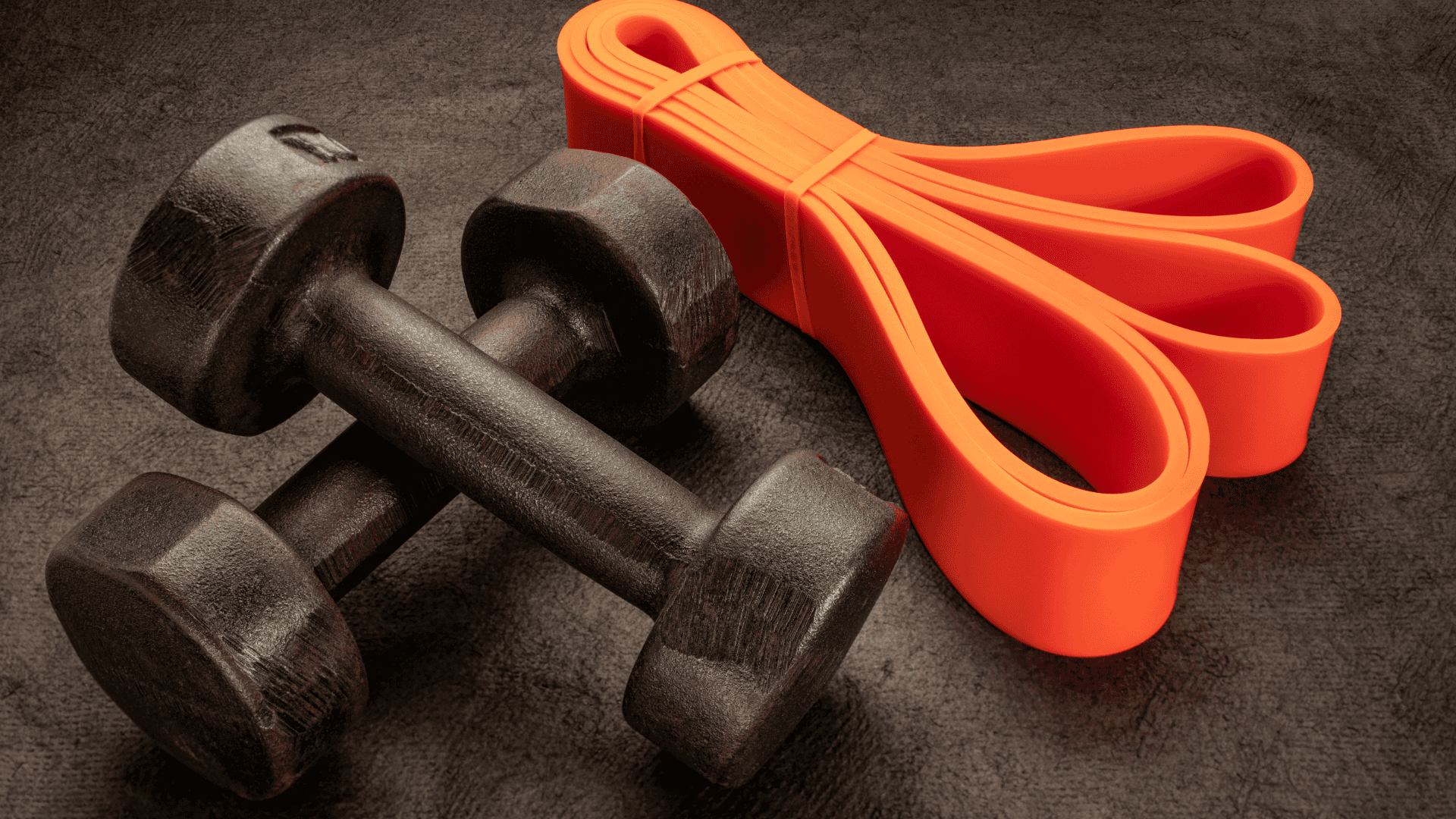
Before jumping into the workouts, it helps to have a few basics on hand. You won’t need a lot, but having the right tools nearby makes things smoother and more comfortable.
Here’s what to keep close:
- A set of dumbbells — Start with light or medium weights. You can always adjust as you get stronger.
- A mini resistance band — Great for adding tension without heavy lifting.
- A yoga mat or soft surface — You’ll want something with grip and cushion, especially for floor moves.
- Water and a towel — Keep both nearby so you don’t have to stop and search mid-workout.
- A timer or workout video — Helps keep you on track without watching the clock.
Set everything up in a spot where you can move around without distractions. That’s all you need to be ready for the week ahead.
Your 7-Day Workout Schedule for Women at Home
This weekly routine is meant to be easy to follow, even on your busiest days. You’ll move through different types of workouts throughout the week—some focused on strength, some on cardio or recovery.
Every workout is 15 to 35 minutes, and you can do it all in your living room.
Here’s how your week will look, one day at a time:
Day 1 – Full-Body Strength & Conditioning (35 Minutes)
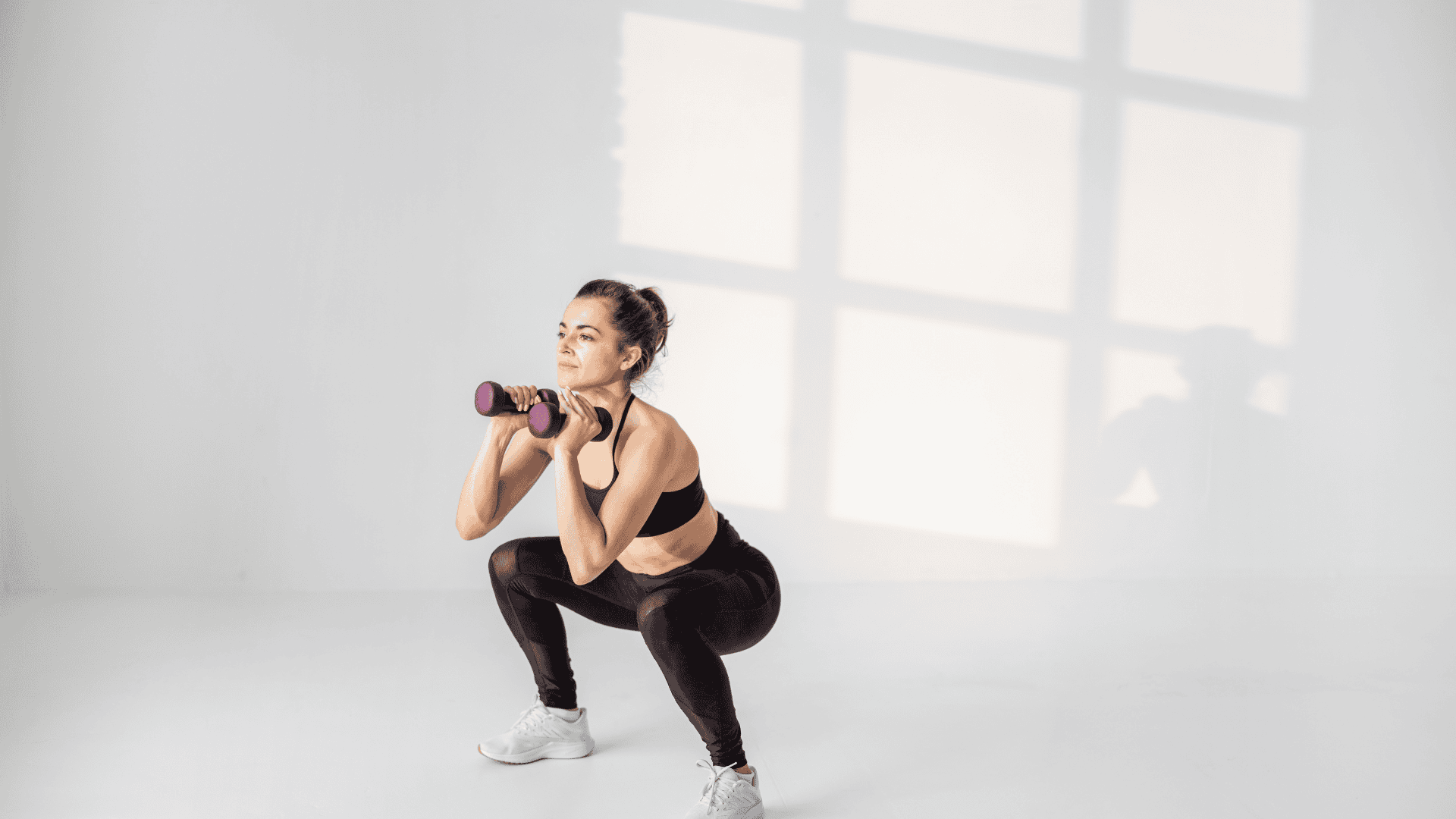
To start your week strong, this workout uses dumbbell circuits that train your whole body—upper, lower, and core.
You’ll do moves like:
- Squat to Press – Hold a dumbbell in each hand. Squat down, then stand and press the weights overhead.
- Bent-Over Row – With knees slightly bent and back flat, hinge forward and pull the dumbbells toward your sides.
- Glute Bridge with Chest Press – Lie on your back with your hips lifted. Press the weights above your chest, then lower.
- Russian Twists – Sit with feet flat, lean back a little, and twist side to side while holding one dumbbell.
Work through each move in a circuit. Do about 10 to 12 reps per move, rest briefly, and repeat 2–3 rounds. Go at your own pace.
Day 2 – Arm & Shoulder Focus (20 Minutes)
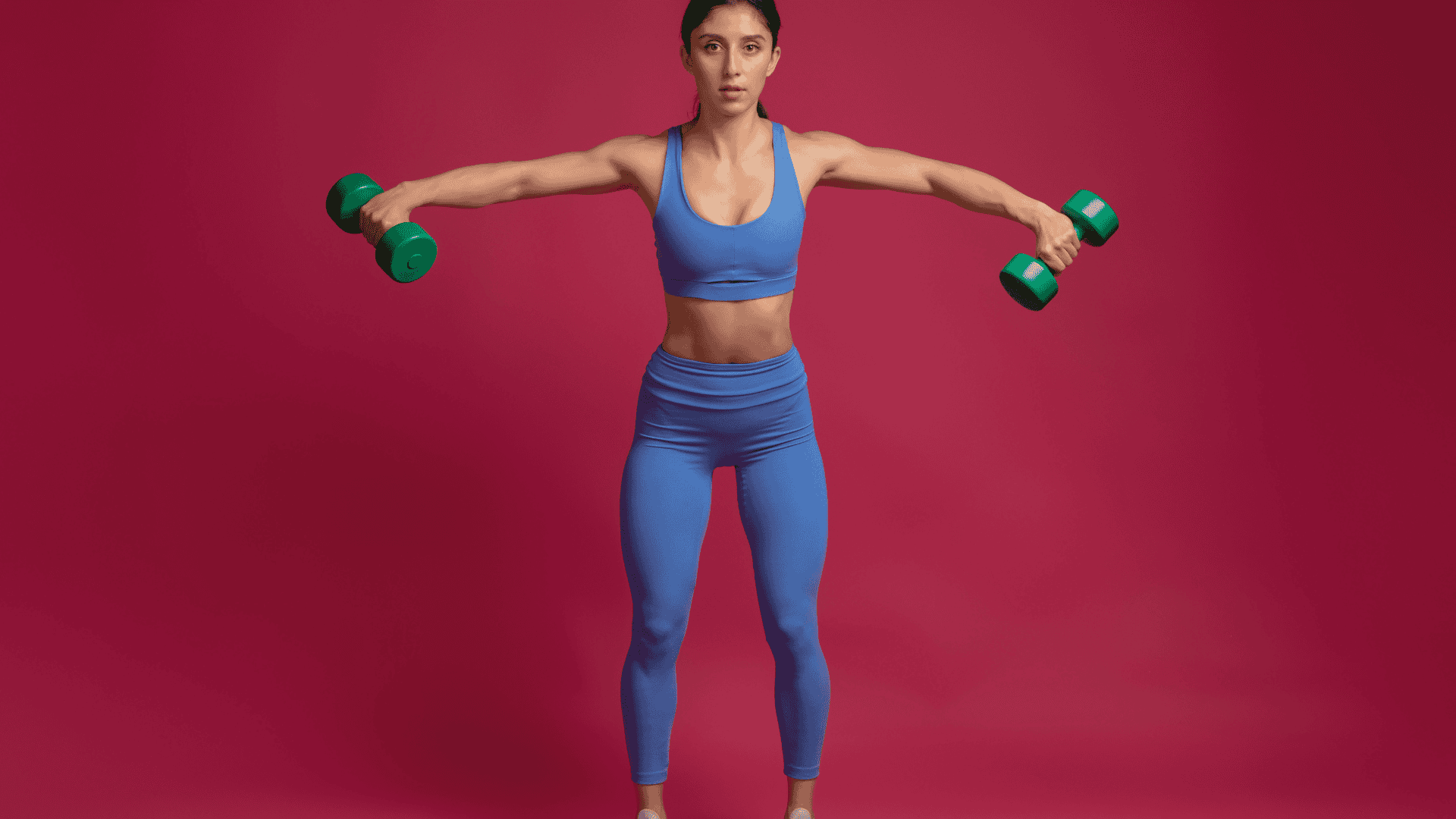
Next, you’ll focus on toning your arms and shoulders. This one’s short and targeted, but it works.
You’ll do moves like:
- Bicep Curls – Palms facing up, curl the dumbbells toward your shoulders.
- Overhead Press – Hold the weights at shoulder height, then press straight up.
- Tricep Kickbacks – Bend forward slightly, elbows tight by your sides, and straighten your arms back.
- Lateral Raises – Lift dumbbells out to your sides just to shoulder height, then lower slowly.
Aim for 10–12 reps each. Complete 3 rounds with short rests in between.
Day 3 – Lower Body Strength (25 Minutes)

Now it’s time to work your legs and glutes. These large muscle groups support your posture and everyday movement.
Try:
- Bodyweight or Dumbbell Squats – Lower into a seated position, then press through your heels to stand.
- Lunges – Step forward and bend both knees to 90 degrees. Push back to the center and switch legs.
- Glute Bridges – On your back, press through your heels and lift your hips.
- Deadlifts – With weights in hand, hinge at your hips and lower the dumbbells down your legs, then return to standing.
Stick to 3 sets of 10–12 reps per move.
Day 4 – Mat Pilates (15 Minutes)
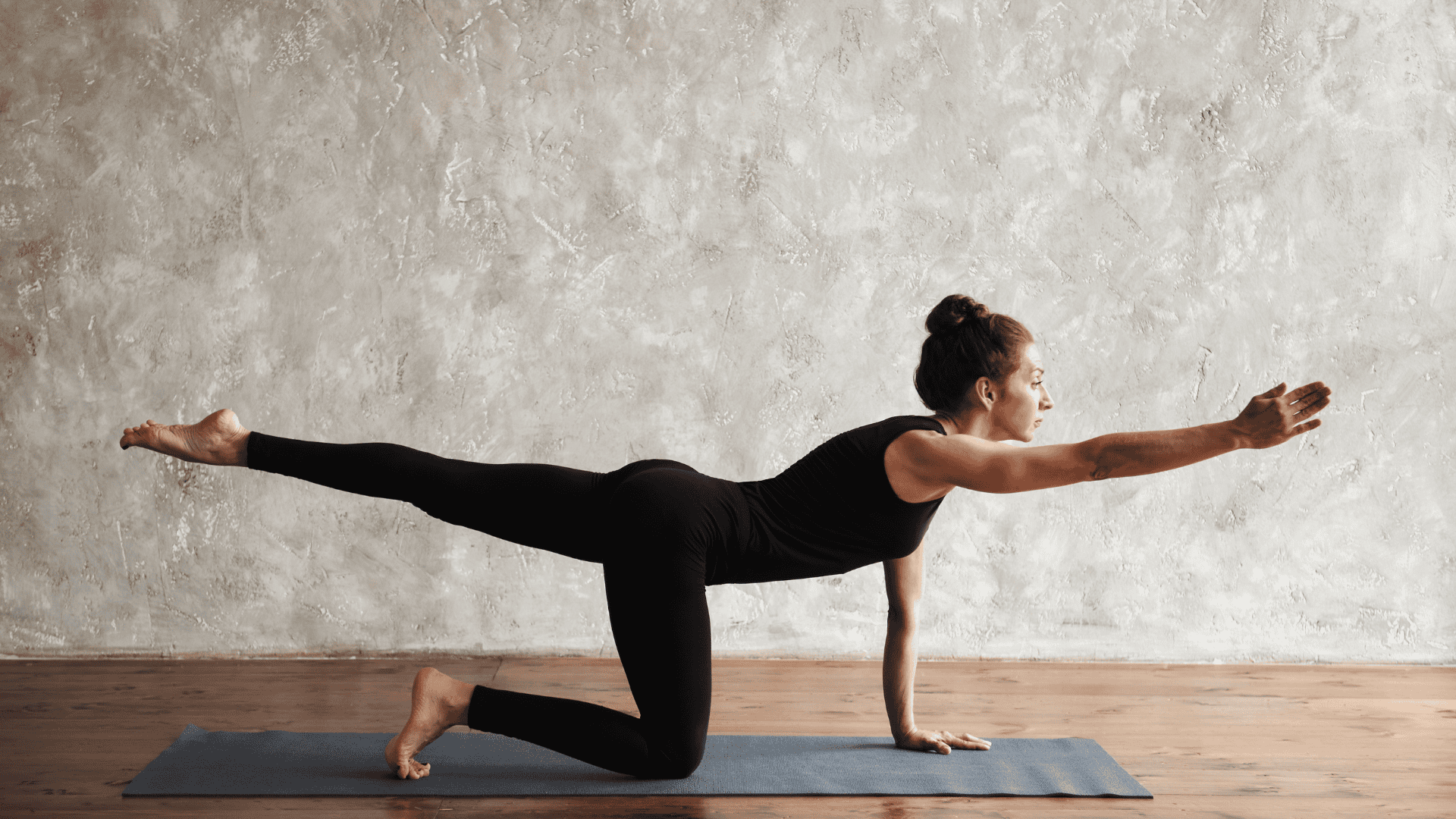
Midweek, you’ll slow things down with a low-impact core pilates session. This helps improve your posture and stability without high intensity.
You’ll do:
- Leg Lifts – Lie on your back, lift your legs straight up, then lower with control.
- Bird-Dog – On all fours, extend opposite arm and leg, then switch sides.
- Side-Lying Leg Raises – Lie on your side and lift the top leg, keeping it long.
- Plank Hold – Forearms on the mat, hold a strong position with your body in one line.
Move slowly through each. Breathe with each rep. Focus on form.
Day 5 – Full-Body HIIT (25 Minutes)

Now it’s time to pick up the pace. This high-energy workout at home mixes strength and cardio with short bursts of effort.
Each round includes:
- Jump Squats or Squat Pulses – If jumping feels okay, lower into a squat and explode upward. For less impact, stay low and pulse in a controlled range.
- Push-ups (Knees or Full) – Hands under shoulders, lower your chest, then press up. Drop to your knees if needed to keep good form.
- Mountain Climbers – In a plank position, run your knees toward your chest one at a time, keeping your core tight.
- Burpees or Step Backs – For full burpees, drop into a squat, kick your feet back, then return and stand. For less impact, step back one leg at a time instead of jumping.
Do 30 seconds of work, then 30 seconds of rest. Repeat for about 20 minutes total. Modify as needed.
Day 6 – Resistance Band Workout (30 Minutes)
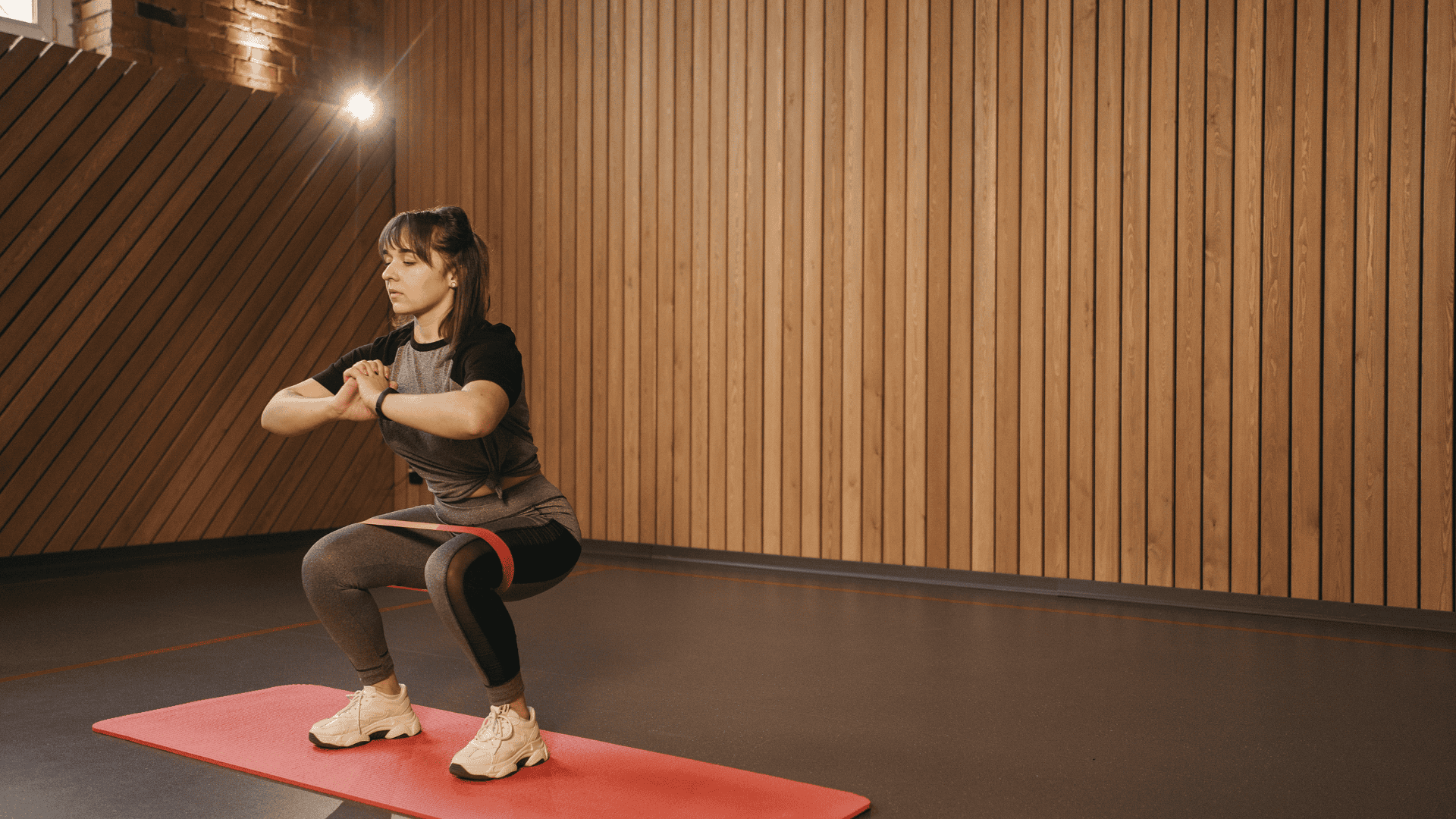
To finish your strength work for the week, you’ll use a mini resistance band. This adds intensity without needing heavy weights.
You’ll do:
- Banded Squats – Place a resistance band just above your knees. Stand with feet hip-width apart. Lower into a squat while keeping your knees gently pressing outward. This activates your glutes and helps build strength in your lower body.
- Standing Rows – Loop the band around something sturdy like a door handle or pole. Hold the ends and step back to create tension. Pull your elbows straight back, squeezing your shoulder blades together. Move with control to target your back and arms.
- Glute Kickbacks – Keep the band around your thighs. Stand tall and shift your weight to one leg. Kick the other leg straight back while keeping your hips square. This move strengthens your glutes and helps improve balance.
- Side Steps – Keep the band around your lower thighs or ankles. Bend your knees slightly and take small steps to the side. Step 10–15 times in one direction, then switch. This works your outer hips and thighs.
Stick with 3 rounds. You’ll feel the burn without a lot of equipment.
Day 7 – Mobility & Recovery (5 Minutes)

Finally, you’ll wrap up the week with a short recovery session. These easy stretches helps your body reset so you’re ready for the week ahead.
Include:
- Cat-Cow – Start on your hands and knees. Arch your back gently toward the ceiling (like a cat), then drop your belly and lift your chest (like a cow). Move slowly between the two to warm up and stretch your spine.
- Child’s Pose – From hands and knees, sit your hips back toward your heels and stretch your arms forward on the floor. Let your forehead rest down. This stretch helps relax your back, hips, and shoulders.
- Hip Flexor Stretch – Step one foot forward into a low lunge. Keep your front knee over your ankle and gently shift your weight forward. You’ll feel a stretch in the front of your back hip. Switch sides after 20–30 seconds.
- Shoulder Rolls & Neck Circles – Roll your shoulders forward in a slow, smooth circle, then reverse the direction. After a few rounds, gently circle your head to the right, then to the left. This helps release tension in your shoulders and neck after a long week of movement.
Even five minutes of gentle movement goes a long way toward recovery.
How to Keep This Routine Going All Week
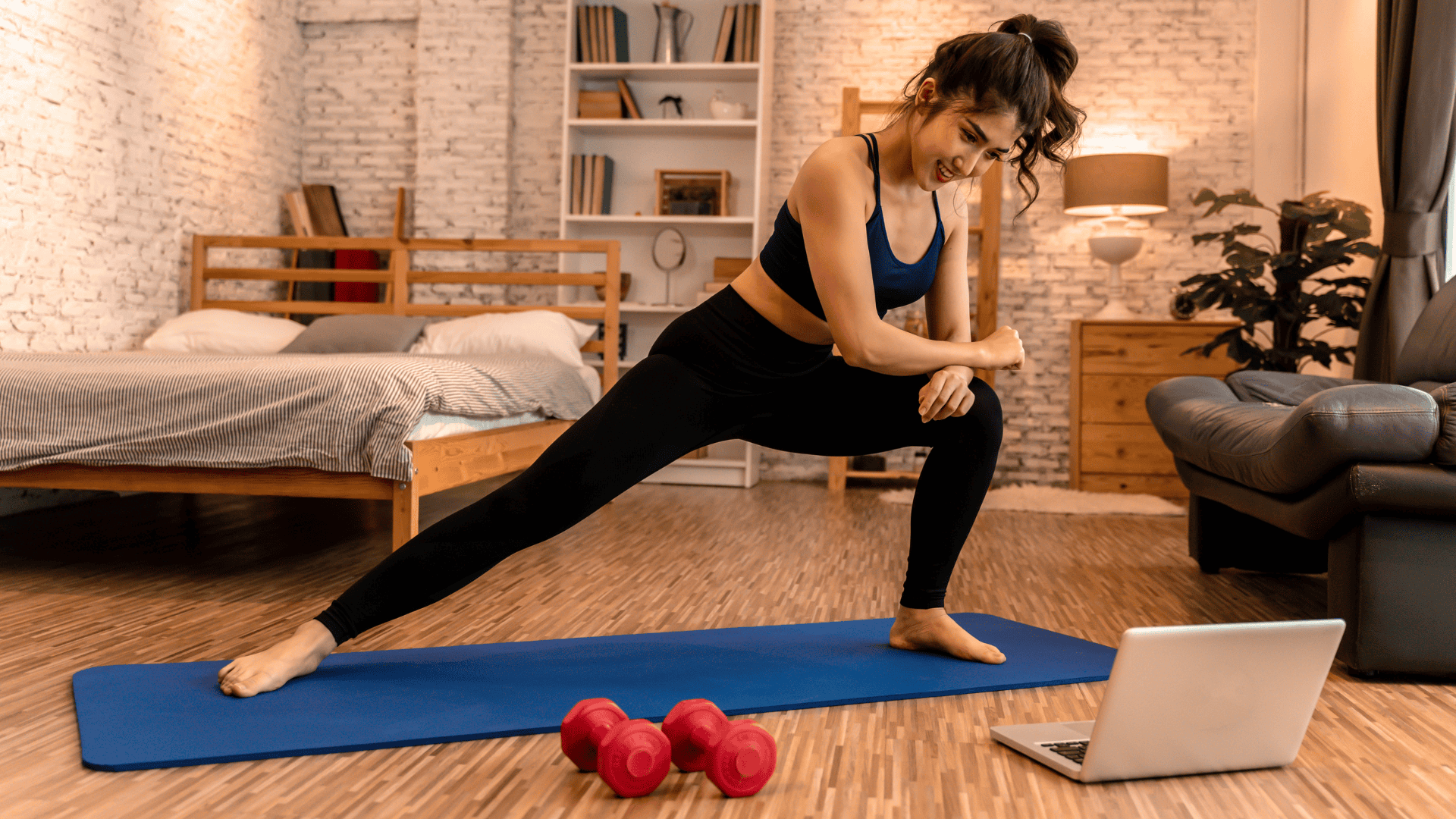
Starting a workout plan is one thing. Keeping it up when you gets busy? That’s the real challenge. But with a little planning, it doesn’t have to fall apart after just a few days.
Here are a few ways to help this plan work all throughout your week.
- Pick a time that fits your day: Morning, lunch break, after dinner, it doesn’t matter when you work out, as long as it works for you. Sticking to the same time each day builds a rhythm that’s easier to follow.
- Keep your space set up: If your dumbbells and resistance band are always tucked away, there’s a good chance that you will skip working out. Instead, leave them in the corner of your room or next to your mat. That small setup makes it easier to show up.
- Track your workouts: You can write them down in a notebook, add them to your phone, or cross them off a list. Seeing your progress day by day helps you stay motivated, even on tough weeks.
- Go shorter if you need to: Some days will be full. (That’s okay) Do one round instead of three, or just stretch for five minutes. A little movement still counts.
- Adjust the plan to match your week: If something comes up midweek, just move things around. The structure of this home workout plan can stay the same even if the days shift around.
Remember that the idea isn’t to hit every workout perfectly. It’s to keep showing up, even if it looks a little different each time.
Before You Start, Keep This in Mind
Some days will go smoothly. Others might not. That’s part of real life. What matters is that you keep moving forward, even if a workout is shorter, slower, or split in half.
This plan gives your week structure without being too strict. Everything is already laid out, you know what to do, how long it takes, and what each day is for. That makes it easier to stay on track without second-guessing anything.
Also, not every workout has to be intense. Some days help you build strength. Others boost your heart rate. And a few are just there to help you reset and recover.
That mix keeps your body feeling strong, not drained.
So start where you are. Adjust the plan to fit your schedule. Make changes when needed. Just keep showing up.
The more steady you are, the better it gets.
Your Week, Already Planned
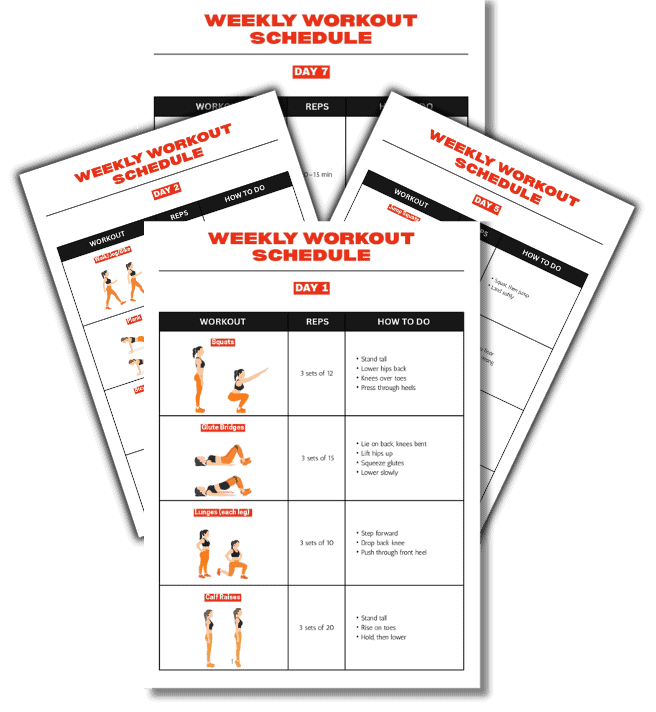
Sticking to a workout schedule is so much easier when you don’t have to figure it out yourself.
That’s why I created the Free Weekly Workout Schedule, a done-for-you plan that works perfectly at home, no gym required.
With quick daily routines, you’ll stay consistent, get stronger, and finally make exercise a habit that lasts, even on your busiest weeks.
Frequently Asked Questions
1. What if I can’t do all 7 days?
That’s okay. Start with what you can manage—maybe 3 or 4 days—and build from there. You can always scale it back or skip a day when needed. The important thing is to keep showing up regularly.
2. Can I do the workouts without dumbbells or a band?
Yes. You can modify many of the moves using just your bodyweight. Squats, push-ups, glute bridges, and core exercises still work well without equipment. When you’re ready to add more challenge, grab a set of light dumbbells and a mini band.
3. How do I know if I’m doing the moves right?
Start slow and focus on control. If you’re unsure, you can look up a short demo video or follow a beginner-friendly workout clip that matches the routine. You don’t need perfect form right away—just safe, steady progress.
4. Can I repeat this same schedule each week?
Absolutely. You can follow this structure week after week. If you want to switch things up later, swap in different exercises while keeping the daily focus (like strength, cardio, or recovery) the same.
5. What if I miss a day?
Skip it and move on. Don’t double up or try to “make up” for it. Life happens, and one missed workout won’t undo your progress. Just pick up where you left off and keep going.
